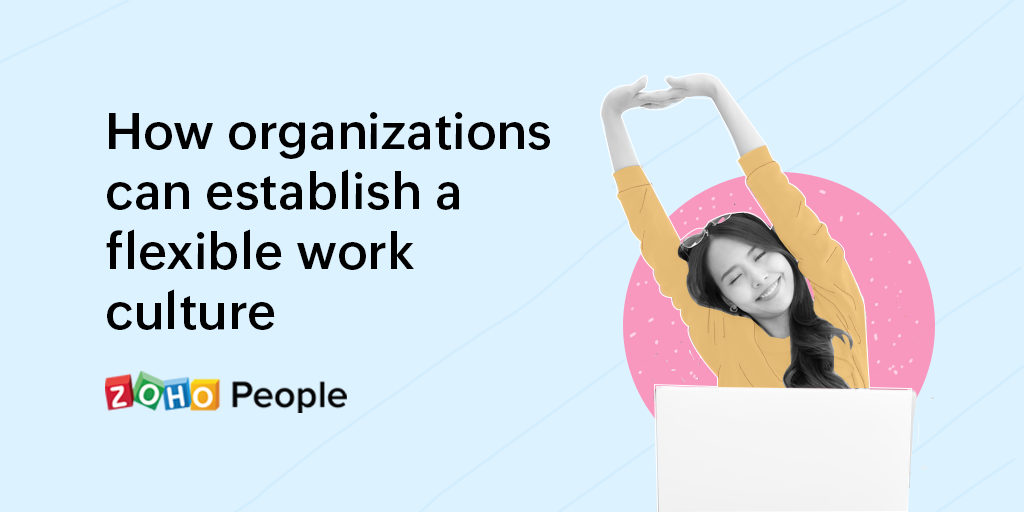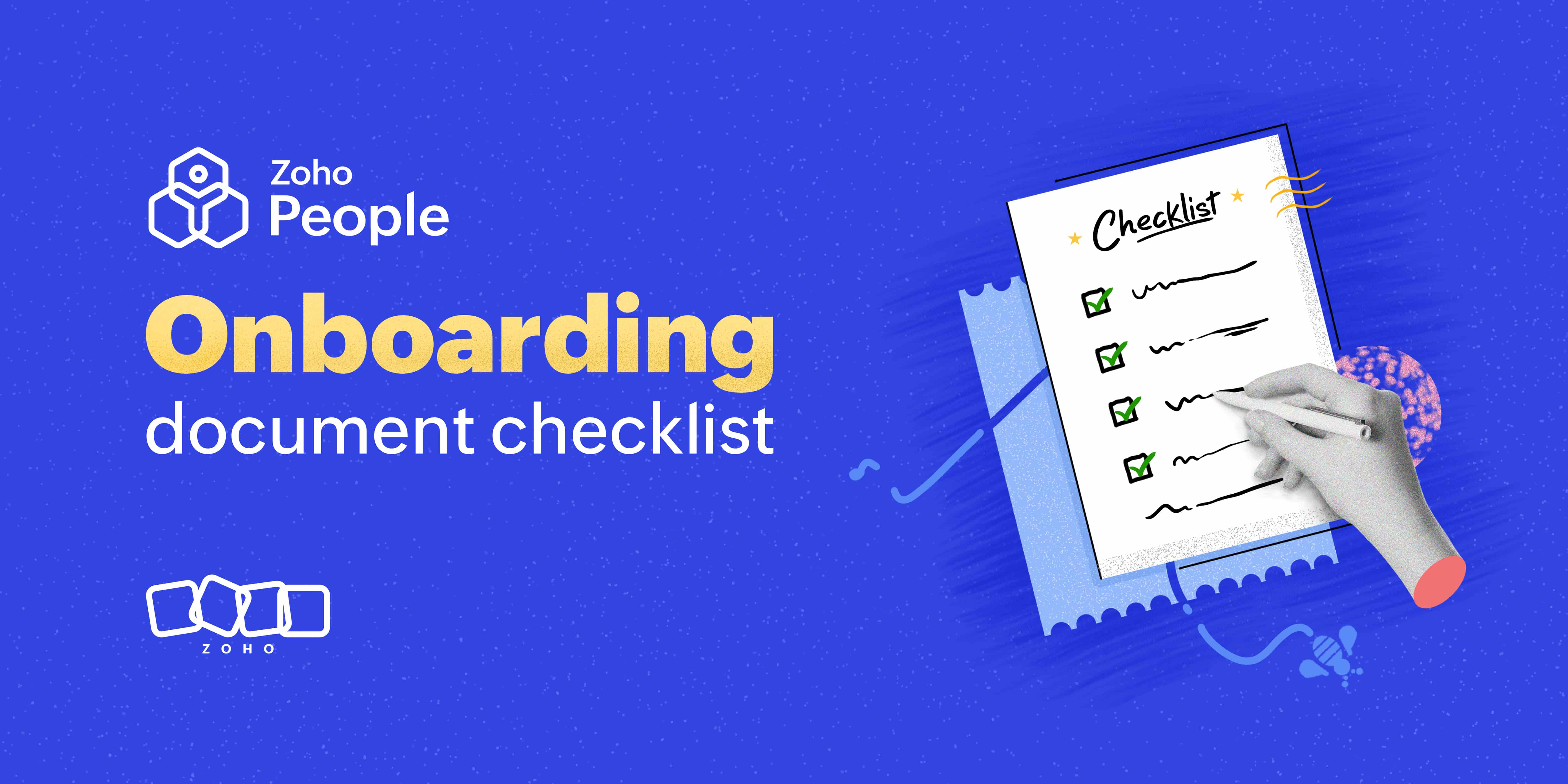- HOME
- HR insights
- Top 5 tips for adopting a flexible work culture
Top 5 tips for adopting a flexible work culture
- Last Updated : August 23, 2023
- 3.7K Views
- 5 Min Read

The ongoing COVID-19 pandemic has fundamentally changed how organizations operate. As employees are fighting through the challenges brought about by the pandemic, flexible workplace practices are growing in popularity. By supporting this flexibility, organizations are showing that they care about the lives employees lead outside of work, and the mutual benefits that employees and organizations are seeing as a result are inspiring more people to jump on the bandwagon.
Workplace flexibility empowers employees to work when they are at their best and shows the trust their employers have in them. It supports work-life balance, which is key to avoiding burnout and improving the physical and mental well-being of employees during these testing times. A survey conducted by FlexJobs in association with Mental Health America has found that respondents with flexible working conditions reported better mental health.
That said, if you're looking to implement more flexible workplace practices, it's important to first analyze how that flexibility will affect your other employee management practices. This will help you avoid pitfalls like procrastination or miscommunication. Here are five tips to help you establish a flexible and effective work culture at your organization.
Find the flexibility that works for you
"Flexibility" is a broad term, and it's less about concrete methods and more about viewing your current workplace practices with a new mindset. Ultimately, how you make your organization more flexible will depend on your industry, your goals, and the needs of your employees and business. Here are some common flexible work arrangements that may benefit your organization:
➤ Flexible work hours: Employees work at a time that is most convenient for them. Ideally, there's no start and end time.
➤ Remote work: As we all know, remote work enables employees to work from anywhere. In some cases, a hybrid work model where employees alternate between remote work and onsite work is more suitable.
➤ Compressed workweeks: Employees complete their 40 hours/week within four days or less.
➤ Flexible time off policy: Employees can take time off without a limit as long as they complete the work they are assigned.
Not all jobs will be compatible with these work arrangements, but we encourage an open mind. Before the pandemic, many executives would have never thought that their organization would thrive with all of their employees working from home. Now, more organizations than ever are choosing to adopt a fully remote or hybrid work model. By analyzing the needs and desires of your workforce, you'll have a better idea of what methods will suit your organization.
Foster trust at all levels of your organization
Without trust, the money, time, and energy you spend establishing a flexible work culture will be in vain. Trust should be the foundation of your work culture, and it shouldn't only apply to managers about their employees. Team members should also be able to trust their managers, HR staff, upper-level executives, and each other. Collaboration, transparency, and innovation can only thrive when workplace relationships remain strong. Trust from supervisors allows your employees to confidently work how, when, and where they want to. When that trust is reciprocated, managers feel more empowered to guide their teams in the right direction.
Building trust starts from hiring. The more sure you are that a new hire will bring the right skills to the table and be the good fit for your organization, the more trust you'll have in them. For employees who have been around longer, give them room to showcase their best work. It's better to start with more autonomy rather than less. Then, when you provide feedback or implement accountability measures, employees won't be as quick to write this off as micromanagement.
Set realistic and specific expectations
Flexible workplace practices are designed to give employees more autonomy, but that will only work if your employees know what they are striving toward. Otherwise, procrastination may creep in and demotivate your employees from completing their everyday tasks. When you start a new project, help your employees visualize what the desired outcomes of their efforts will look like. Setting SMART goals and showing them how each of their tasks adds to the bigger picture will help them stay motivated. By being involved in the process, your employees will gain a better sense of direction, autonomy, and accountability. Evaluate employee performance based on the quality of their work and their ability to achieve these goals rather than the number of work hours they put in.
Train your managers
Even after a year of remote work, some managers may still be struggling to manage their teams effectively from outside the office. The sudden shift was overwhelming, and there wasn't a lot of time for guidance before managers were forced to deal with this new situation. But luckily, you can be more strategic now about implementing flexible workplace practices, and training your managers is a vital part of this.
Without training, managers may feel lost on how to mentor employees or enforce a balanced level of accountability. This could lead to one of two situations: a completely hands-off approach or micromanagement. Neither is good for employee morale, and the success rate of that team will suffer. Communication is at the center of making a flexibility work at the team level. Advise managers on:
➤ How often they should check in with their team members
➤ When it's appropriate to ask for progress reports from employees
➤ What conditions warrant a virtual meeting
➤ What communication tools are available to them
When it comes to performance, encourage managers to evaluate employee performance at set intervals, but on a more frequent basis than just once a year. Encouraging a continuous feedback loop between employees and their supervisors will help both parties adjust to the flexibility a lot easier.
Analyze the results of your approach
After implementing more flexible work arrangements, do a follow-up after three months or so to ensure it's bringing the benefits you expected to both your employees and the organization. Conduct a short survey among your employees to see if they are facing any difficulties. Some employees may feel like they haven't accomplished anything just because they aren't used to working in a non-traditional environment. Others may be struggling to stay engaged, motivated, and productive. By touching base with your employees, you can assess how they are feeling and whether any changes should be made to your overall strategy. It's also important that you include supervisors, executives, support staff, and even your fellow HR team members when you do these assessments. The organization is meant to operate as a cohesive unit, and the impact these new working conditions have on every employee should be considered.
Final thoughts
If implemented properly, workplace flexibility is a win-win strategy for both your employees and your organization. It allows your employees to perform their tasks in a way that is most convenient to them, without having to sacrifice their job or their family. This support from your organization can go a long way toward keeping them engaged, accountable, and productive. We hope these tips help you establish a high-performing, flexible work culture!
 Tarika
TarikaContent Specialist at Zoho People


